10 (more) of the most charming spots in the Greenwich Village Historic District
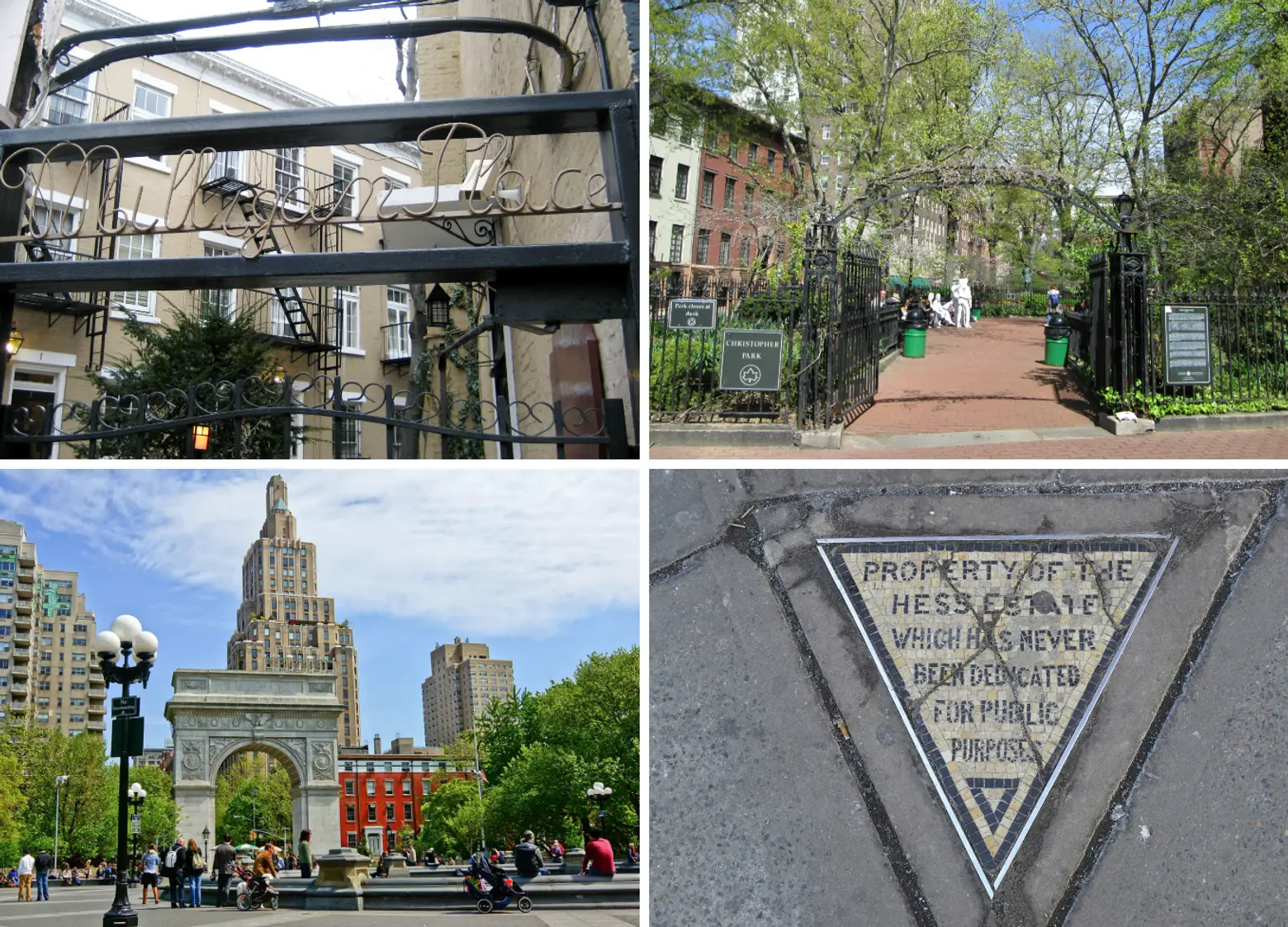
Trying to limit oneself to just 10 of the most charming spots in the Greenwich Village Historic District is truly a fool’s errand. And not one without controversy — since the last column, more than a few disgruntled New Yorkers whose favorites didn’t make the list have reached out (in almost all cases these were places which actually originally made the list, but something had to be cut). So by popular demand (of sorts), here are 10 more of the most charming spots in the Greenwich Village Historic District, from the smallest piece of privately owned property in New York to a series of “squares” that are anything but.
1. Patchin Place and Milligan Place
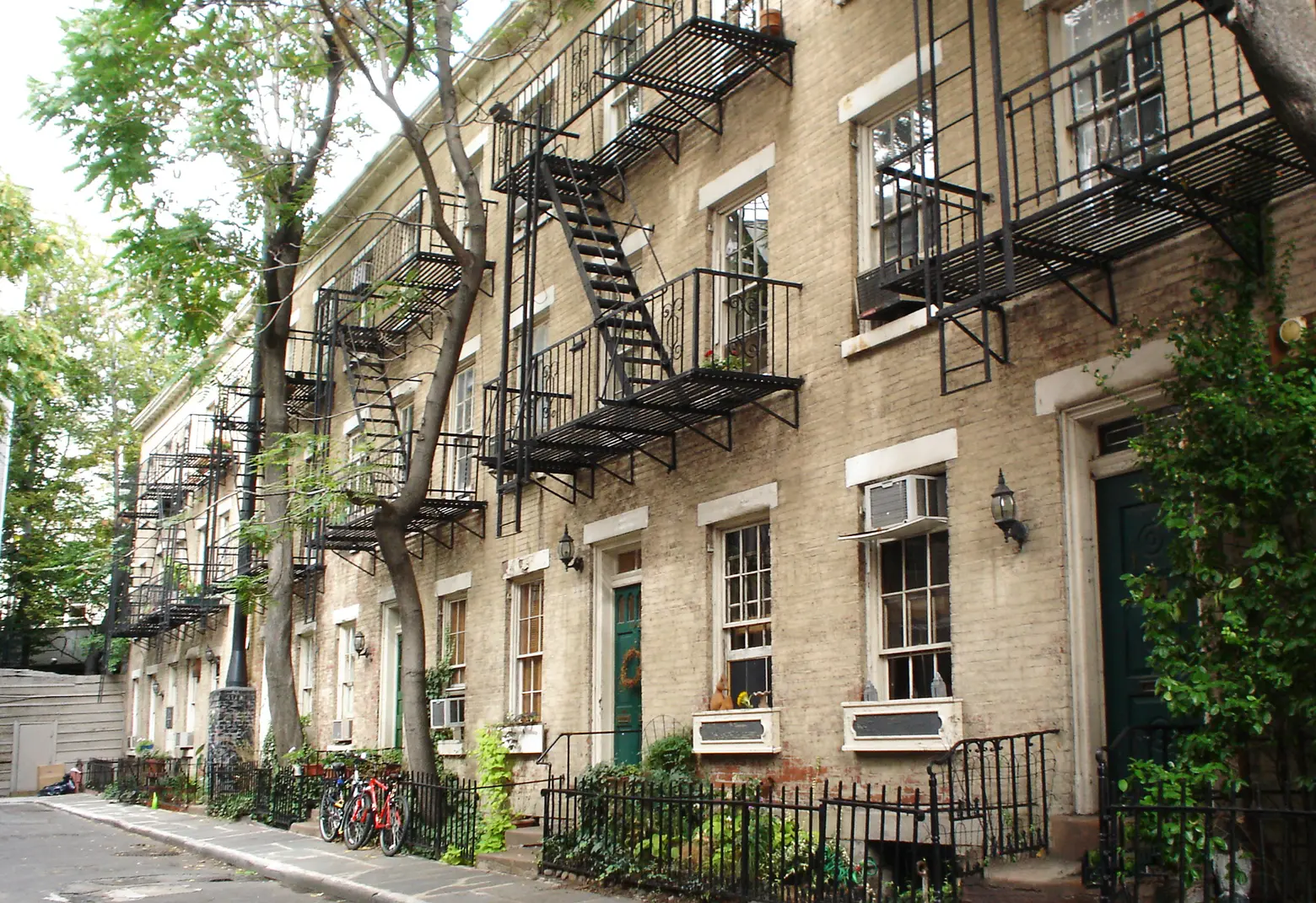 Patchin Place via Flickr cc
Patchin Place via Flickr cc
Few places embody the secluded charm of Greenwich Village as perfectly as Patchin and Milligan Places, tucked into the south and east sides of the trapezoidal block bounded by Sixth Avenue, Greenwich Avenue, Tenth and Eleventh Streets. But Patchin and Milligan Places are bound by more than just quaintness and geographic proximity; both contain tiny, vernacular mid-19th-century houses built by Aaron D. Patchin, for whom the former cul-de-sac is named.
The houses of Patchin Place, the older and more southerly of the two alleys, were built in 1848, whereas those on Milligan Place, named for Patchin’s father-in-law, Samuel Milligan, who owned the land, were built in 1852. Both were originally built as modest workmen’s cottages, and both had significantly less charming surroundings for much of their existence. Patchin Place faced a series of prisons and courthouses, including the Jefferson Market Courthouse and Prison, and the notorious and imposing Women’s House of Detention. Prior to its current incarnation as a beloved library, the Jefferson Market Library, which now frames the view from Patchin Place, was abandoned and overrun with rats and pigeons for much of the mid-20th century.
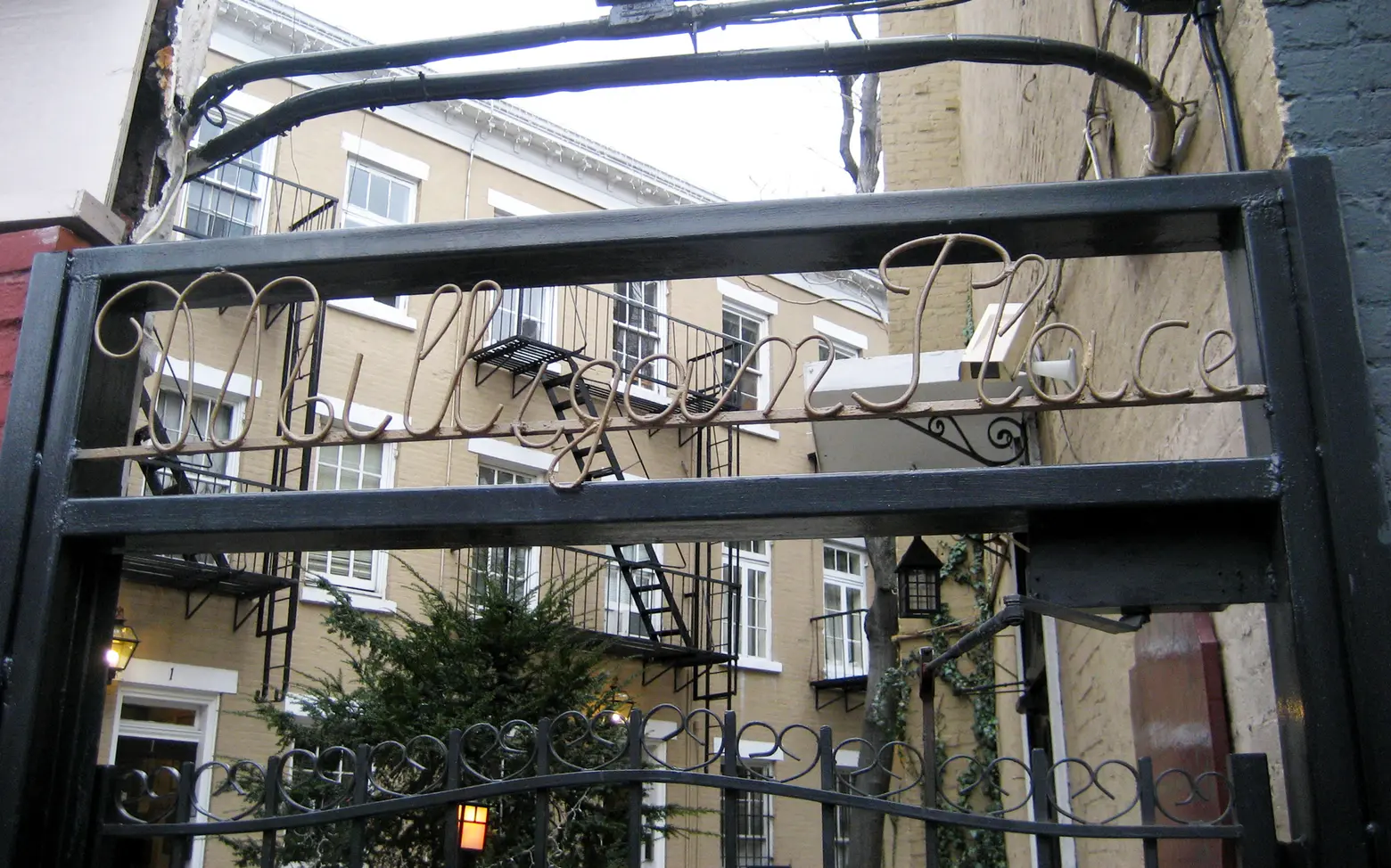 Via Flickr cc
Via Flickr cc
While Milligan Place, which faces Sixth Avenue, was more secluded from the blight of the Jefferson Market block, it had its own issues to contend with. Starting in the 1870s, the tiny court was overshadowed by the dark and noisy Sixth Avenue El, which rattled just overhead.
Both of these charming hideaways had better days ahead. The Sixth Avenue El was torn down in 1938, the Jefferson Market Courthouse was converted into a library in 1967, and the Women’s House of Detention was demolished in 1972 and replaced with the bucolic Jefferson Market Garden.
But even before these shifts in fortune, both spots attracted a who’s who of Village bohemia. E.E. Cummings lived at 4 Patchin Place for nearly his entire career as a poet; modernist Djuna Barnes lived at number 5 for four decades starting in 1940; radical journalist John Reed began writing the chronicle of the Russian Revolution “Ten Days That Shook The World” while living at number 1 with Louise Bryant; and both Theodore Dresier and Marlon Brando took up residence on Patchin Place for a while. Milligan Place, meanwhile, is best known for housing George Cram Cook, founder and director of the Provincetown Players, who was largely responsible for elevating the works of Eugene O’Neill and his wife, the playwright and novelist Susan Glaspell.
Patchin Place may be best known for the charming gas lamp which still operates at the head of the court, while Milligan Place is distinguished by the delicate wrought iron gate at its entrance which spells out the alley’s name.
2. Wooden House at 17 Grove Street
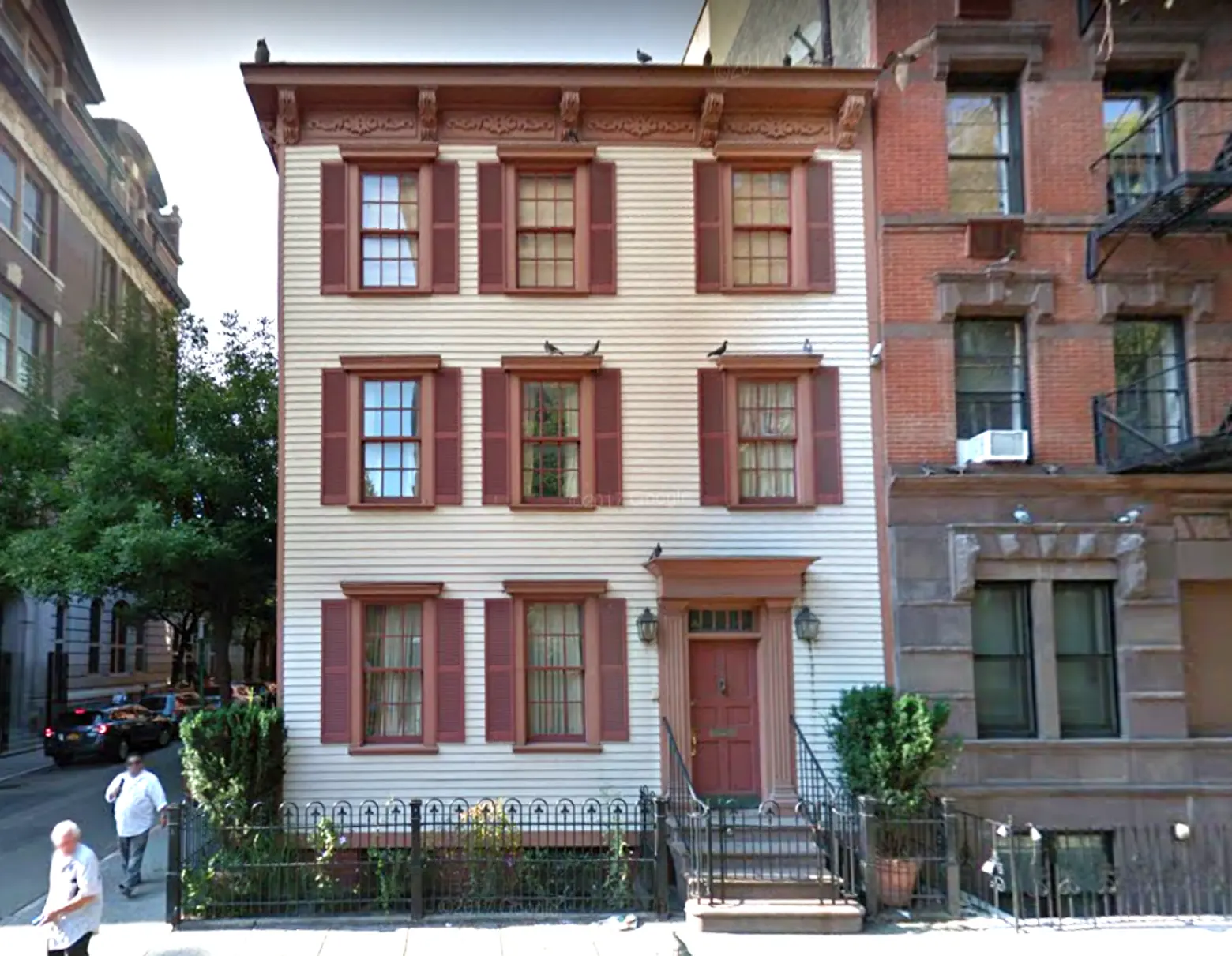 17 Grove Street via Google Street View
17 Grove Street via Google Street View
The wooden house at 17 Grove Street (at Bedford Street) is often assumed to be one of the oldest houses, if not the oldest house, in Greenwich Village. It’s a good guess since wooden house construction was banned in Manhattan starting in the early 19th century in response to fires in these densely-packed precincts. The prohibition was enacted first below Canal Street in 1816, then below 32nd Street in 1849, and finally below 155th Street in 1882. But 17 Grove Street only dates to 1822 (actually, just the first two floors do; the third floor was added in 1870). This makes it a relative youngster compared to some of the houses found in these parts, in spite of its charmingly anachronistic look.
But regardless of its date of construction, 17 Grove is one of the most photographed and beloved houses to be found anywhere in the Village. And while there are several wooden houses in the Greenwich Village Historic District (including the 1799 Isaac Hendricks House diagonally across the street at 77 Bedford Street), most of those have been covered in brick. But 17 Grove proudly wears its woodenness on its sleeve. It also improbably maintains the wooden workshop behind it on Bedford Street, built by the original owner William Hyde, a window sash maker. Both the main house and the former workshop are now single-family residences.
3. Twin Peaks, 102 Bedford Street
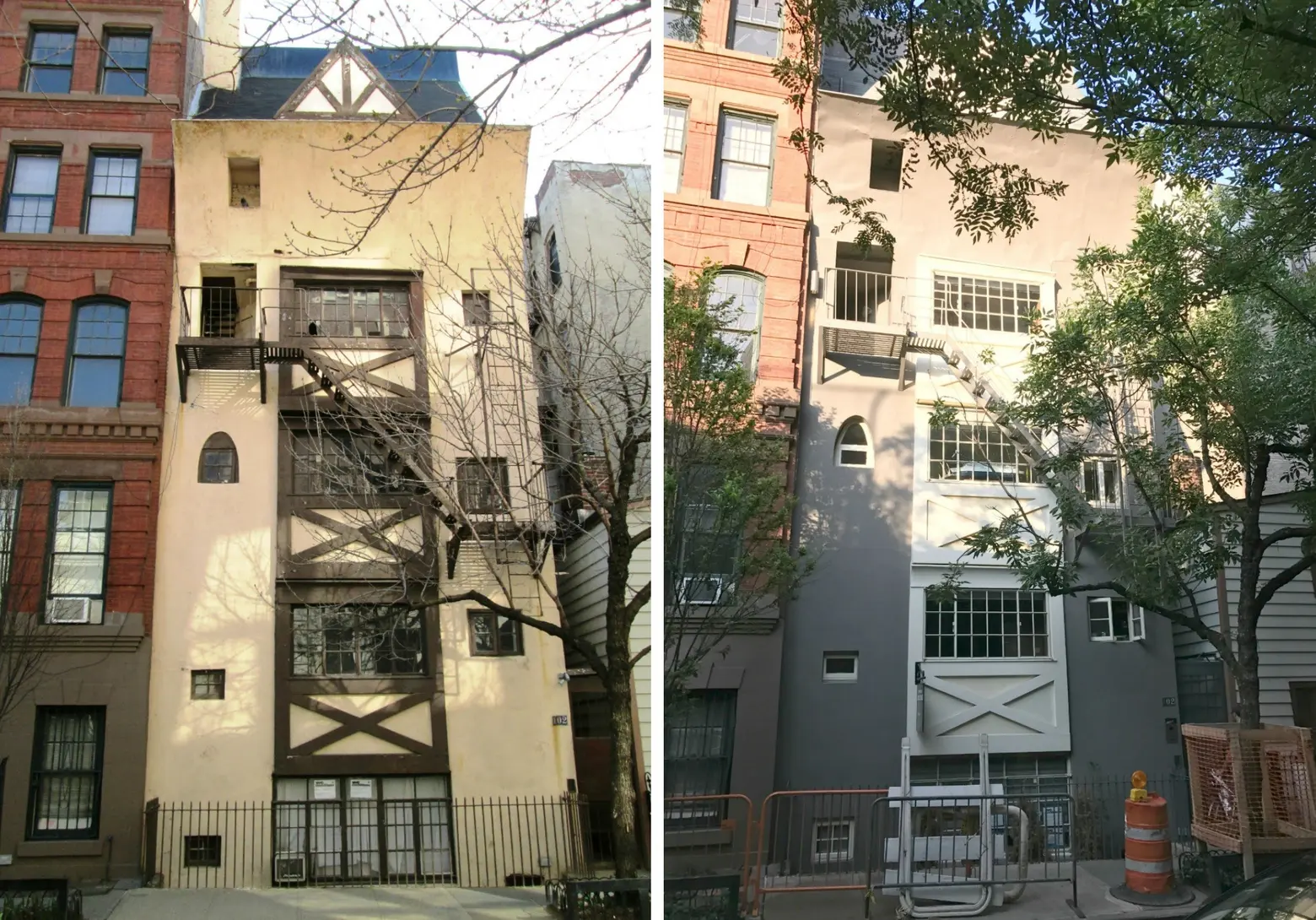 102 Bedford Street in 2015 (left) via Wiki Commons, and as of today, via GVSHP
102 Bedford Street in 2015 (left) via Wiki Commons, and as of today, via GVSHP
Just behind 17 Grove’s wooden workshop lies a building that captures the whimsy, flamboyance, and bohemian spirit of early-20th-century Greenwich Village like no other. “Twin Peaks” was born in its present incarnation in 1925 as a radical remodeling of an 1830 rowhouse into a five-story artists’ studio apartment building.
At Twin Peaks’ unveiling, no effort was spared to emphasize its free-spirited and iconoclastic associations. According to press accounts, film star Mabel Normand was invited to christen the building by smashing a bottle of “pre-Napoleon” champagne on one of the chalet-style gables while Princess Amelia Troubetzkoy burned acorns in a bronze brazier as an offering to Pan. The pagan ritual was complemented by the sprinkling of holy water by Archbishop William Henry Francis of Chicago, and actresses Helen Hayes and Minnie Madern Fisk tossed flowers from above onto onlookers in the street.
At the time, the New York Sun described Twin Peaks as “one of the most curious looking buildings” in the city, while years later architecture critic Paul Goldberger dubbed it a “wonderfully ludicrous mock half-timbered fantasy row-house castle.” A more recent dour grey and beige paint job has dulled the building’s whimsy somewhat, but nothing can extinguish the flame of one of the Village’s most unusual and eccentric buildings.
4. Hess Triangle
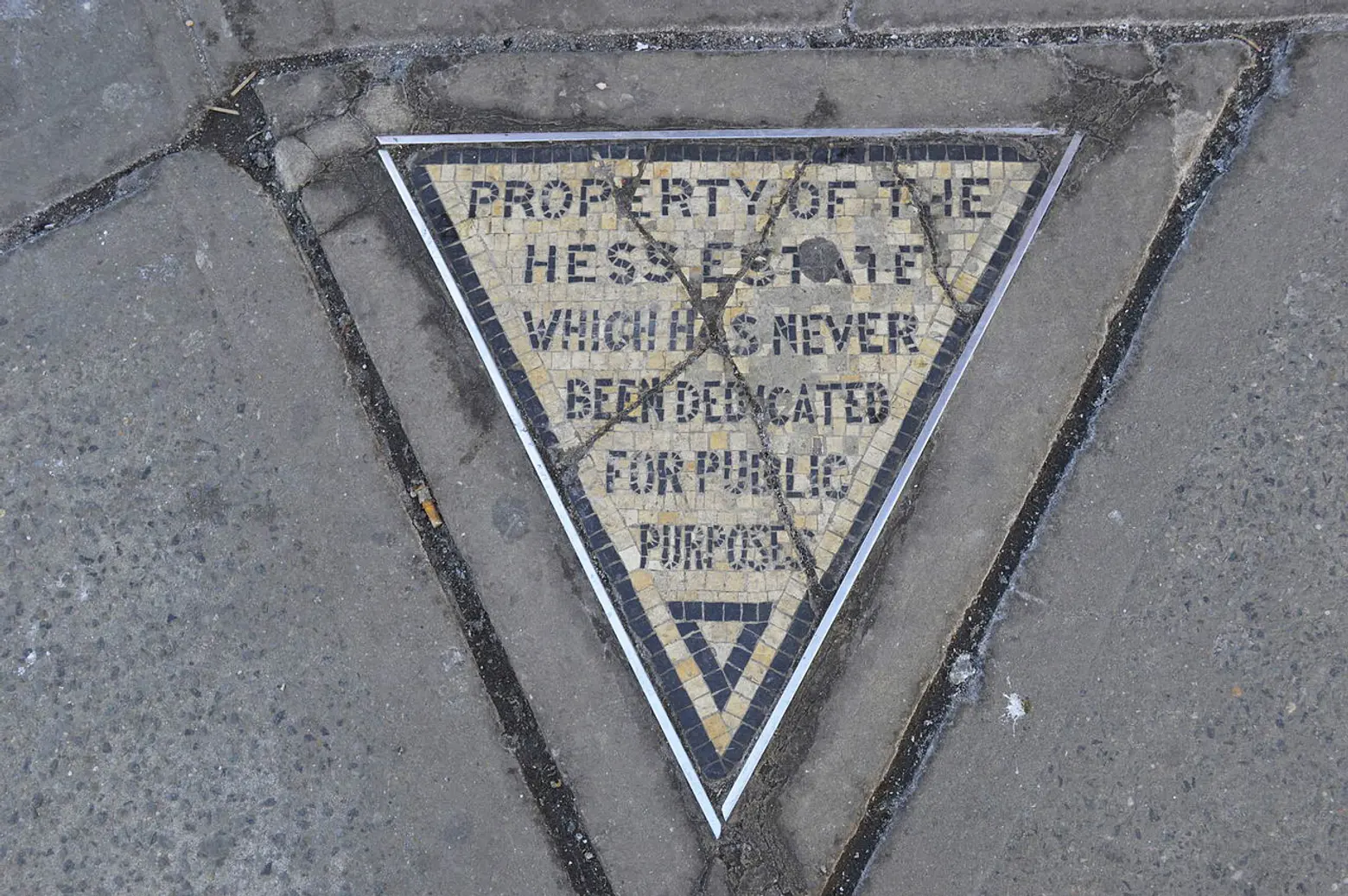 Via Wiki Commons
Via Wiki Commons
Rare is the tiny piece of sidewalk that can attract the attention or affection of the 300-square-inch tile-covered triangle located in front of Village Cigars at 110 Seventh Avenue South and Christopher Street in Sheridan Square. The nearly 100-year-old Hess Triangle could be said to represent everything about the Village’s iconoclasm, its resistance to authority, its diminutive scale, and its quirky streetscapes.
While it’s been over 80 years since this has been true, the triangle defiantly says “Property of the Hess Estate, Which Has Never Been Dedicated for Public Purposes.” It has long been known as the smallest piece of privately owned property in New York.
The triangle results from the demolition of dozens of buildings in the 1910s to make for the construction of Seventh Avenue South (Seventh Avenue previously ended at 11th Street) and the subway line underneath. One of those buildings was an apartment house known as the Voorhis, owned by the heirs of David Hess. Like many owners, they resisted giving up their property but lost their battle to City Hall.
But not entirely. When the property was condemned, a sloppy surveyor missed its easternmost corner. The City tried to get the Hesses to hand it over voluntarily, but they refused, and in 1922 installed the plaque indicating their continued ownership of this tiny piece of land, in spite of the wishes of the city. This was their thumb in the eye of municipal leaders who sought to (and for the most part, were able to) steamroll over their property and rights.
Though the Hess Estate sold the property a mere 13 years later to the adjoining property owner, the tile plaque remains, a nearly century-old tribute to one quixotic effort to resist the march of time, and to the idiosyncratic street pattern which defines the Village.
5. “Squares” that aren’t squares
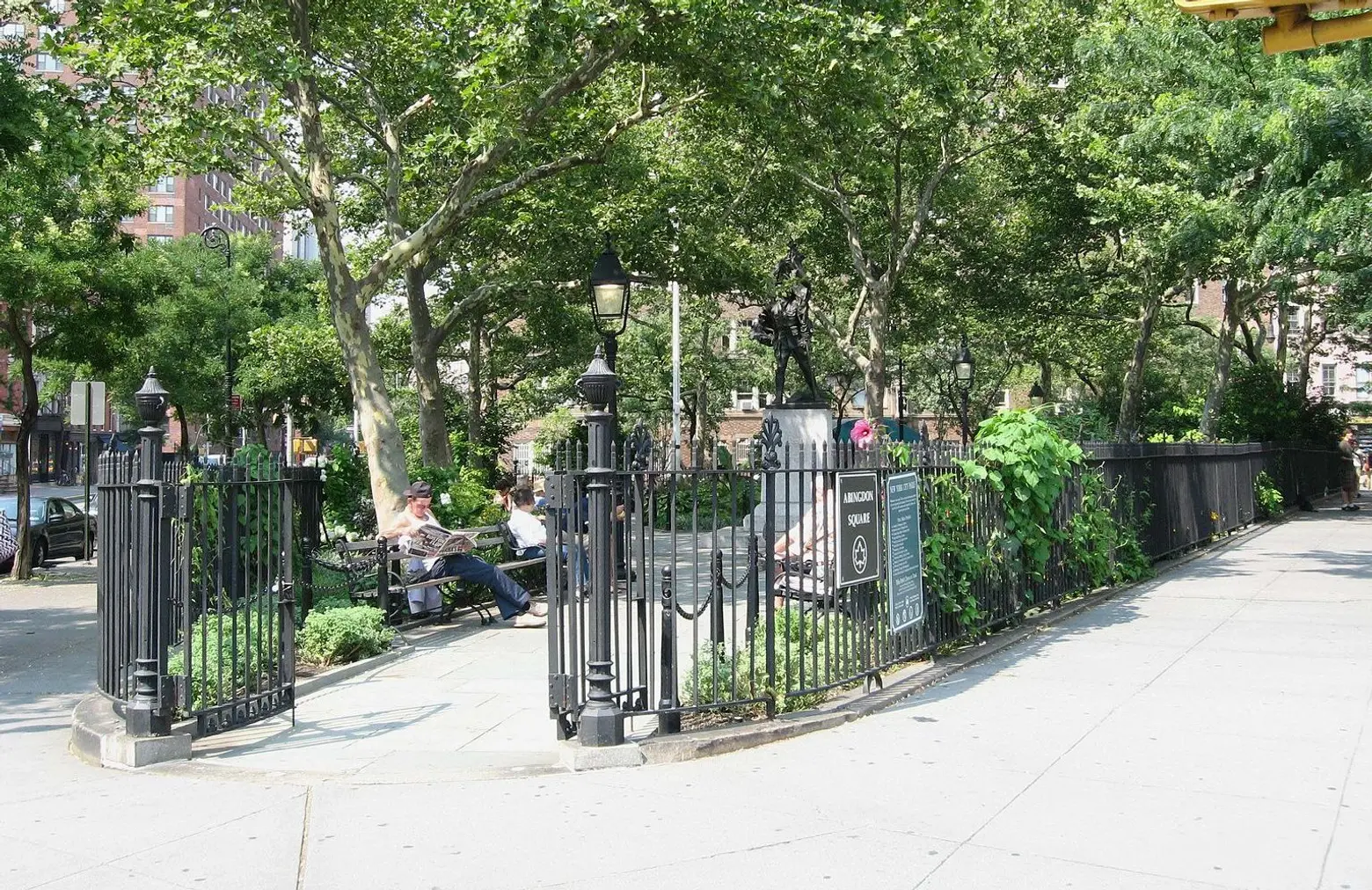 Abingdon Square via Wiki Commons
Abingdon Square via Wiki Commons
Speaking of triangles, one of the defining elements of the Greenwich Village Historic District’s charm are the many tiny verdant “squares” which are, in fact, anything but. Abingdon Square, Jackson Square, and the viewing garden and Christopher Park in Sheridan Square are all acute triangles of green, reflecting the Village’s curious tangle of streets.
Abingdon Square, where Hudson Street meets Eighth Avenue, dates to 1831 and is perhaps best known for the Abingdon Square Memorial, more commonly known as the Abingdon Doughboy, which commemorates local men who fought in World War I.
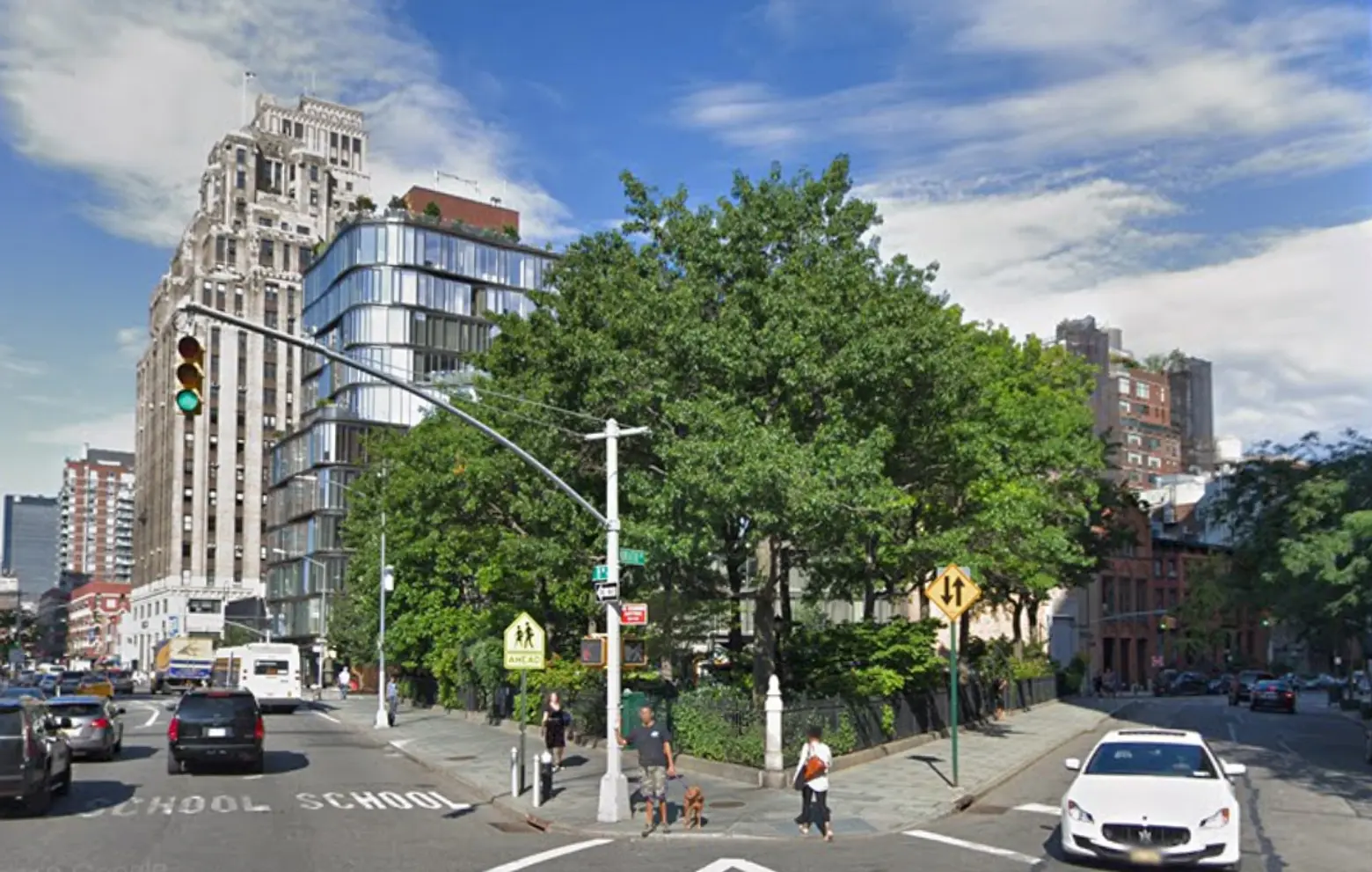 Jackson Square via Google Street View
Jackson Square via Google Street View
Jackson Square, at Greenwich Avenue and 13th Street, dates to 1826 and used to be bordered by Jackson Hall on its south (since demolished), which was once the home of New York’s most powerful Democratic Club, and the Jackson Square Library, a picturesque Flemish-style structure of 1888, which still stands at 251 West 13th Street, and is now a private residence.
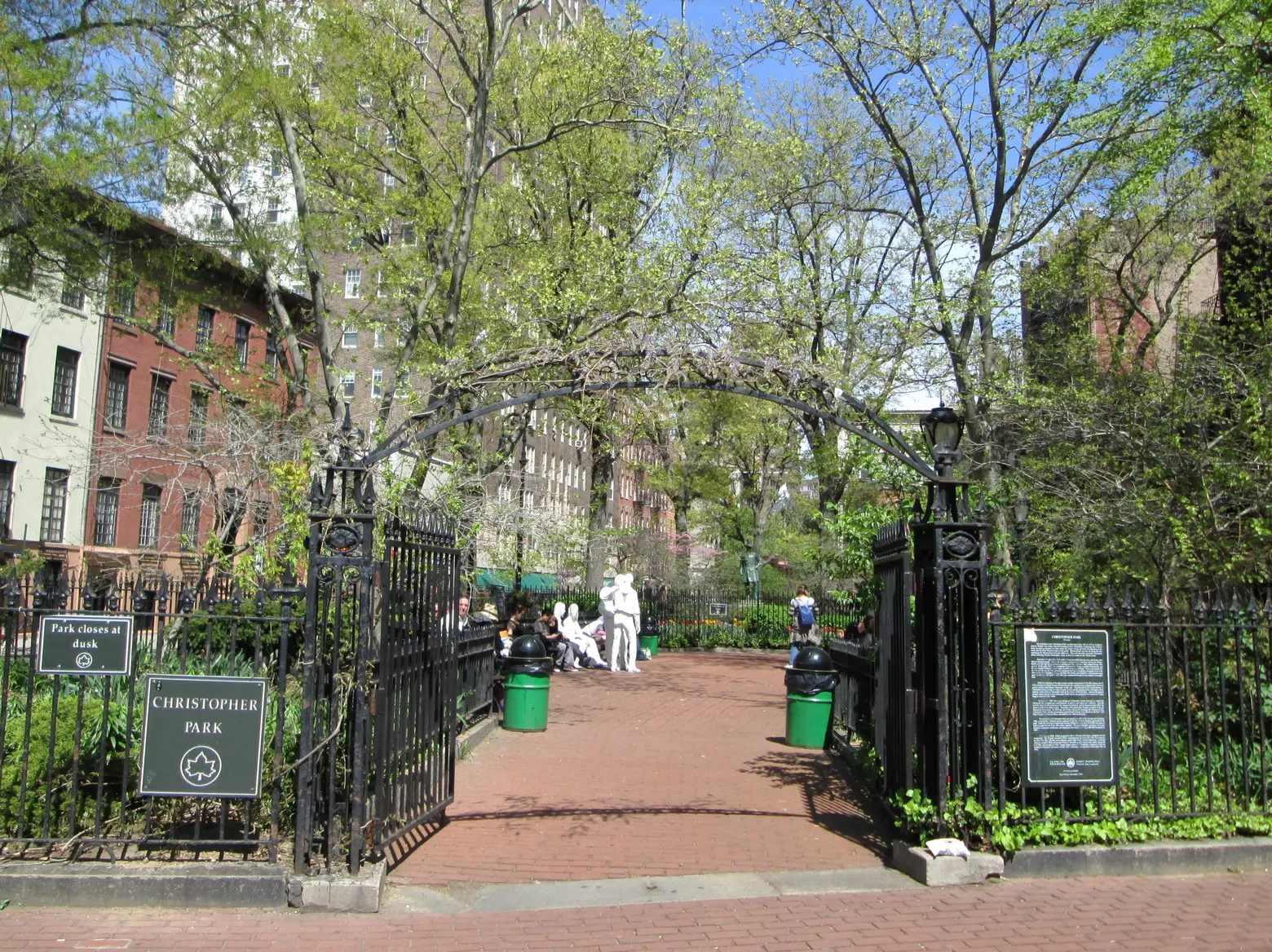 Christopher Park via Wiki Commons
Christopher Park via Wiki Commons
Christopher Park, where Christopher and Grove Streets meet in Sheridan Square, dates to 1837 and grew out of a devastating fire in the area two years prior. The triangular park is surrounded by a 19th-century wrought iron fence and is perhaps best known for the “Gay Liberation” statues placed there in 1992, and the naming of the park as part of the Stonewall National Monument in 2016.
The Sheridan Square Viewing Garden is far and away the youngest of this quartet, dating to only 1983. Formerly a mere traffic island, it was the subject of a full archeological dig which uncovered Native American and colonial artifacts in 1982 before it was transformed into the lushly planted oasis it remains today.
Like the Sheridan Square viewing garden, these other charming (non-)squares have not always been quite so picturesque. Abingdon Square was mostly covered in asphalt until an early 2000s renovation added the current grass and rolling green walkways, while Jackson Square’s abundant plantings and lavish central granite and cast-iron fountain also date to a 1990 renovation.
6. Artist Studios
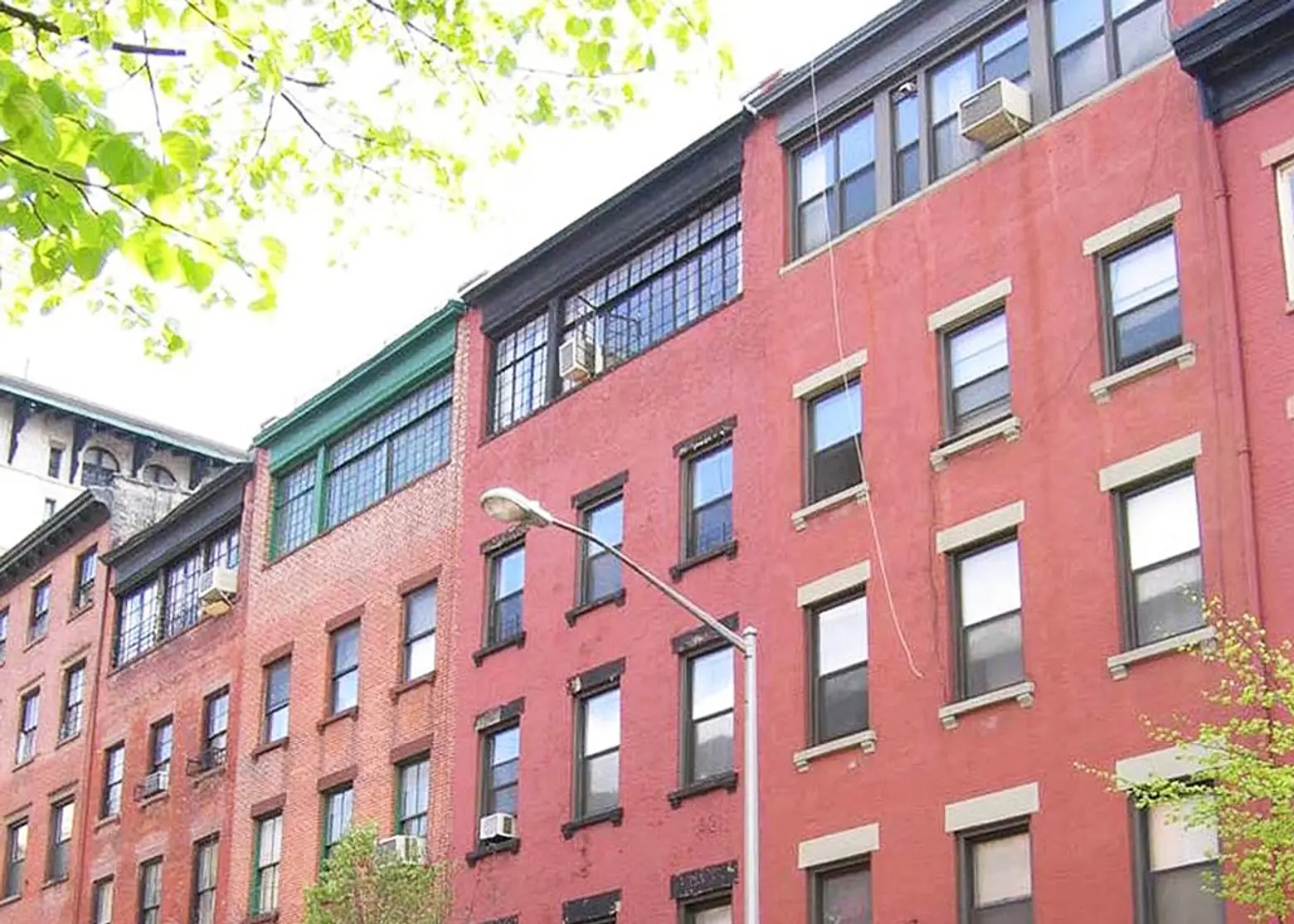 Artist’s studios on Bleecker Street, via GVSHP
Artist’s studios on Bleecker Street, via GVSHP
Greenwich Village may not be the only place in New York with artist studio windowsinserted into old buildings. But no place in New York, and probably the world, has so many of them, or so many that are as beguiling as the ones found here.
These large, industrial-style casement windows are inserted into the upper floor of rowhouses throughout the Greenwich Village Historic District, so much so that the <designation report for the district calls them out as a defining feature. Typically added in the 1910s, 20s, and 30s, they reflected the mass migration of artists to the Village, and of those who wanted to live around them, in the early 20th century. Usually part of the extruding upward of what had once been the servants’ attic quarters in a single-family house, artists’ studios and their windows were usually added after the houses had been converted to apartments, and were a way of making otherwise unappealing, cramped top floor walk-up apartments into light-filled, high-ceilinged open spaces perfect for artists or new residents.
Artists’ studios in the Village range from the sober to the sublime. 226 and 228 West 13th Street, for instance, have plain casement windows inserted into simple and modest early 19th century structures. Meanwhile, the artists’ studio at 52 West 9th Street comes with a balcony worthy of a Medici Palace, and the studio at 114 Waverly Place caps a psychedelic German Expressionist reinterpretation of a Greenwich Village rowhouse that dates to 1920.
7. Washington Square Arch
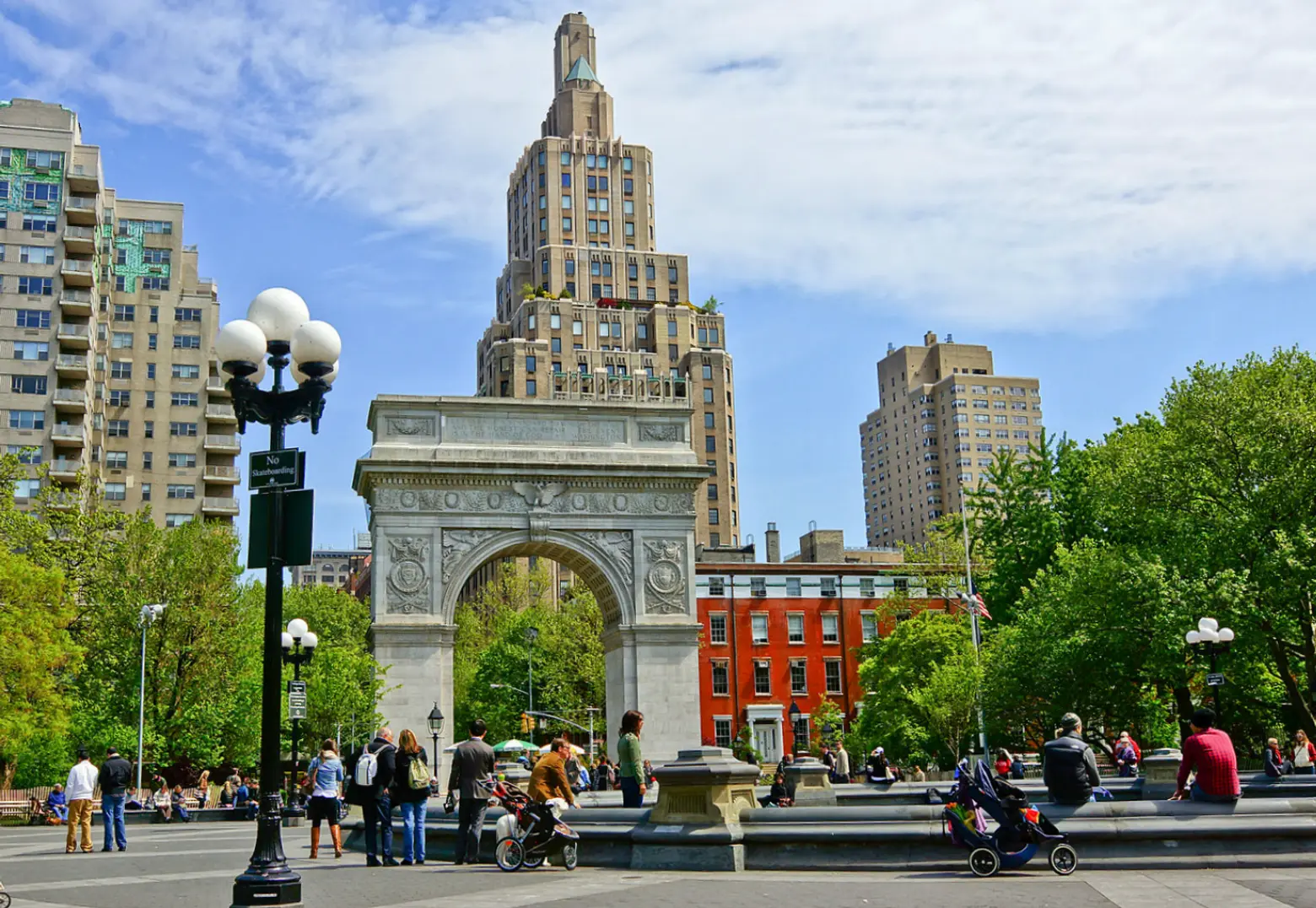 Via Wiki Commons
Via Wiki Commons
The arch is at once perhaps New York’s most formal piece of outdoor sculpture and its most enduring symbol of Village iconoclasm and informality. Modeled on the Arc de Triomphe and framing the vista down Fifth Avenue, it’s also probably the place in New York most reminiscent of Paris, with all its associations of grandeur and artistry.
Built to celebrate the 100th anniversary of the inauguration of George Washington in Lower Manhattan, the original wooden arch was such a big hit with New Yorkers there was an almost immediate push to make a permanent version. The Tuckahoe marble arch we see today was designed by Stanford White in 1892, with the two statues of Washington (“At War” and “At Peace”) added in 1918.
In spite of its commemorative intentions, the Arch is probably most strongly associated with the many protests, musical performances, jugglers and artists that have gathered around it over the years. Adding to its bohemian credentials, in 1917 Greenwich Village rebels John Sloane, Gertrude Dick, and Marcel Duchamp, among others, famously broke into the arch, climbed to the top, released lighted lanterns, and declared Greenwich Village the “Independent Republic of Washington Square.”
8. “Village” Churches
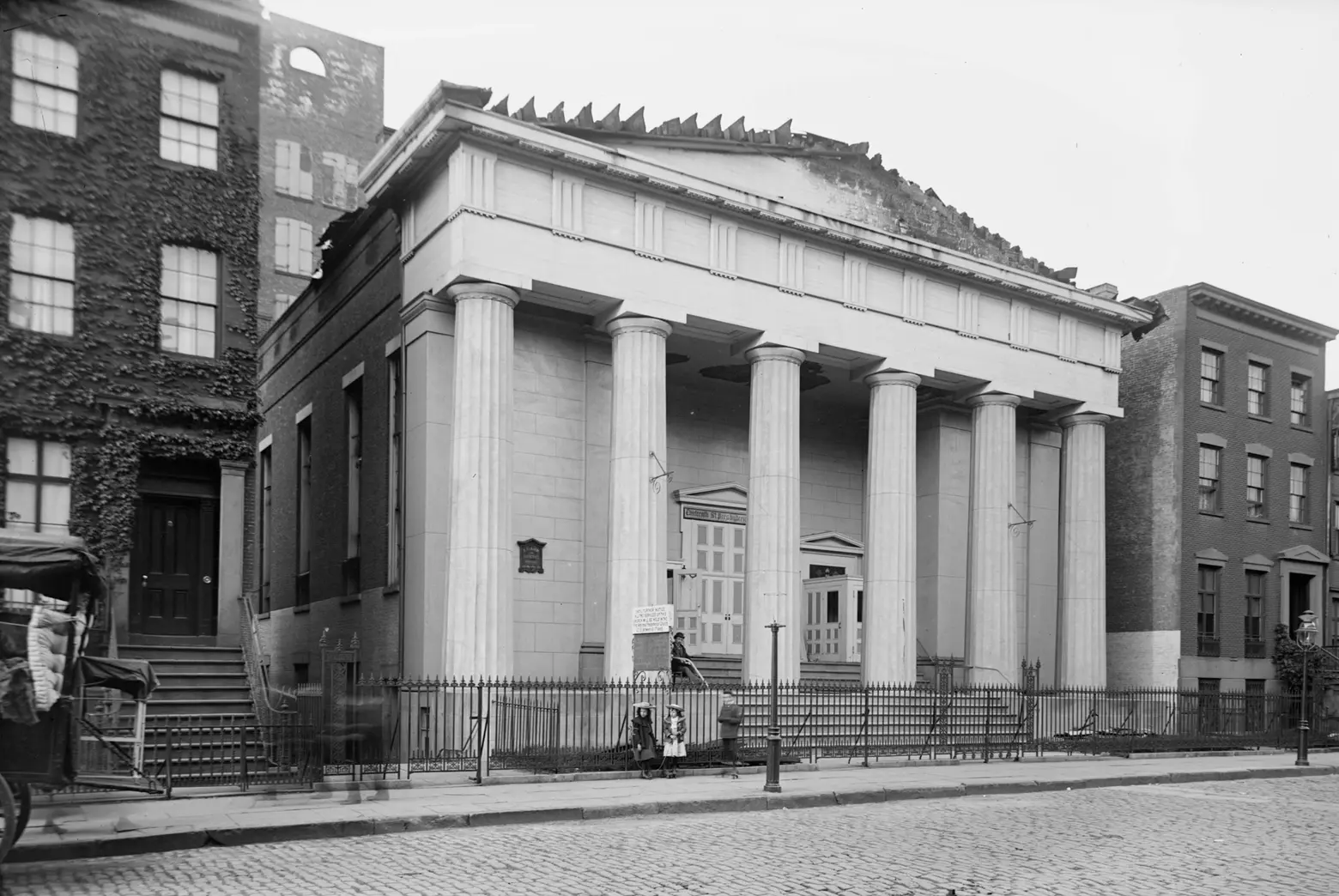 The Thirteenth Street Presbyterian Church in 1902, courtesy of the New-York Historical Society, Robert L. Bracklow Photograph Collection
The Thirteenth Street Presbyterian Church in 1902, courtesy of the New-York Historical Society, Robert L. Bracklow Photograph Collection
The Greenwich Village Historic District is blessed with a number of beautiful churches that add immensely to its charm. The district is home to two of the most impressive Greek Revival Churches in New York – St. Joseph’s (1833) at Sixth Avenue and Washington Place, now the oldest intact Catholic Church in New York, and the former Thirteenth Street Presbyterian Church at 141-145 West 13th Street (1846-47), famous for its almost undetectable conversion to residential use, and its pastor’s coining of the term “rum, Romanism, and rebellion” during the 1884 Presidential campaign, spawning a scandal which arguably changed the outcome of that election.
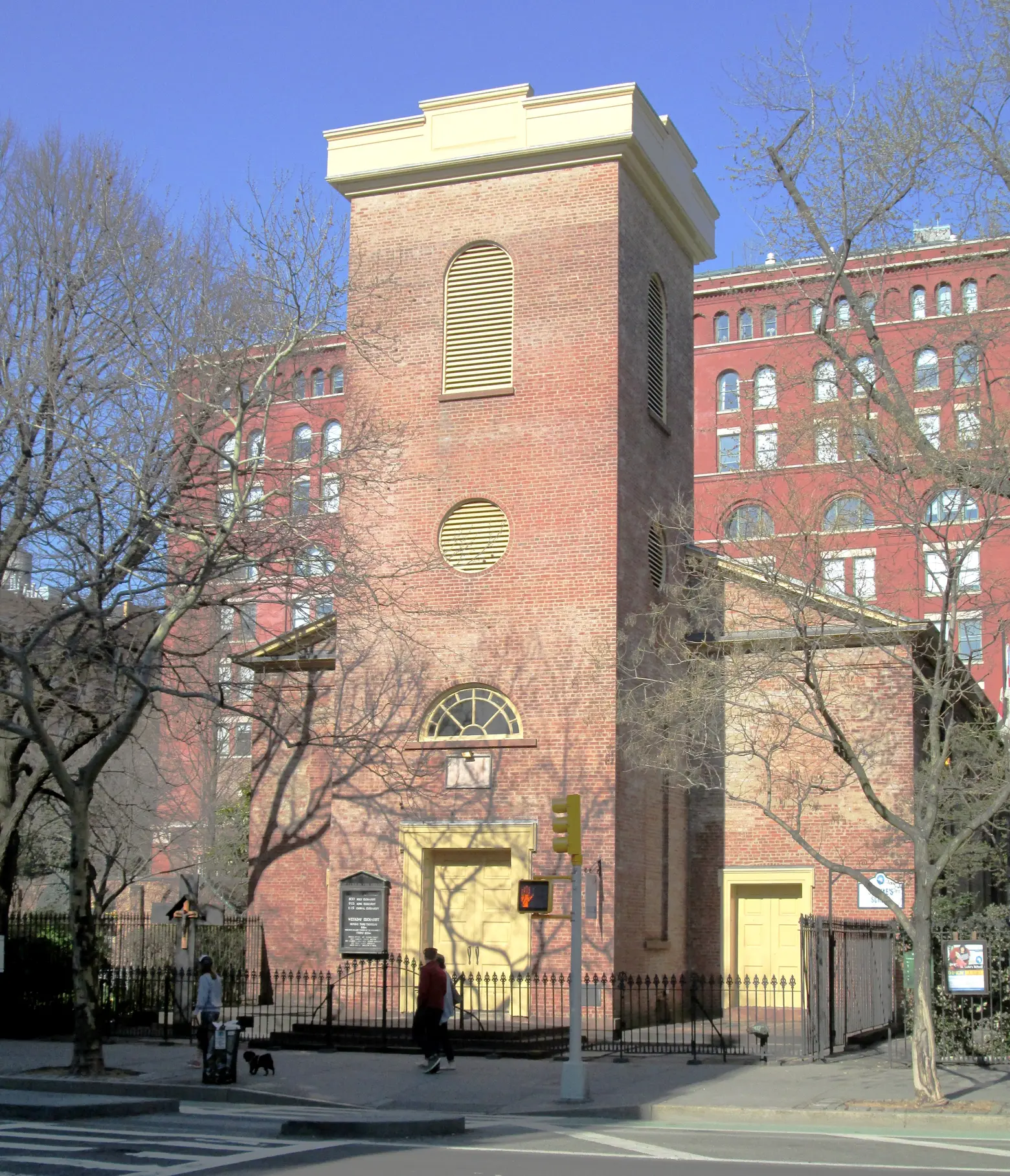 Church of St. Luke in the Field via Wiki Commons
Church of St. Luke in the Field via Wiki Commons
Particularly special, however, are two churches old enough to have been built when Greenwich Village still looked like a Village, and they carry that look into the 21st century. The Church of St. Luke’s in the Field, at 487 Hudson Street near the head of Barrow Street, was built in 1822. Founded by (among others) Clement Clarke Moore, author of “Twas the Night Before Christmas,” it was designed to resemble an English village church, albeit in very American Federal-style brick. The church and its related schools and gardens occupy the entirety of a very large and irregularly-shaped block, and the ample open space and walkways around St. Luke’s allow it to continue to appear as though sited in the center of a Village.
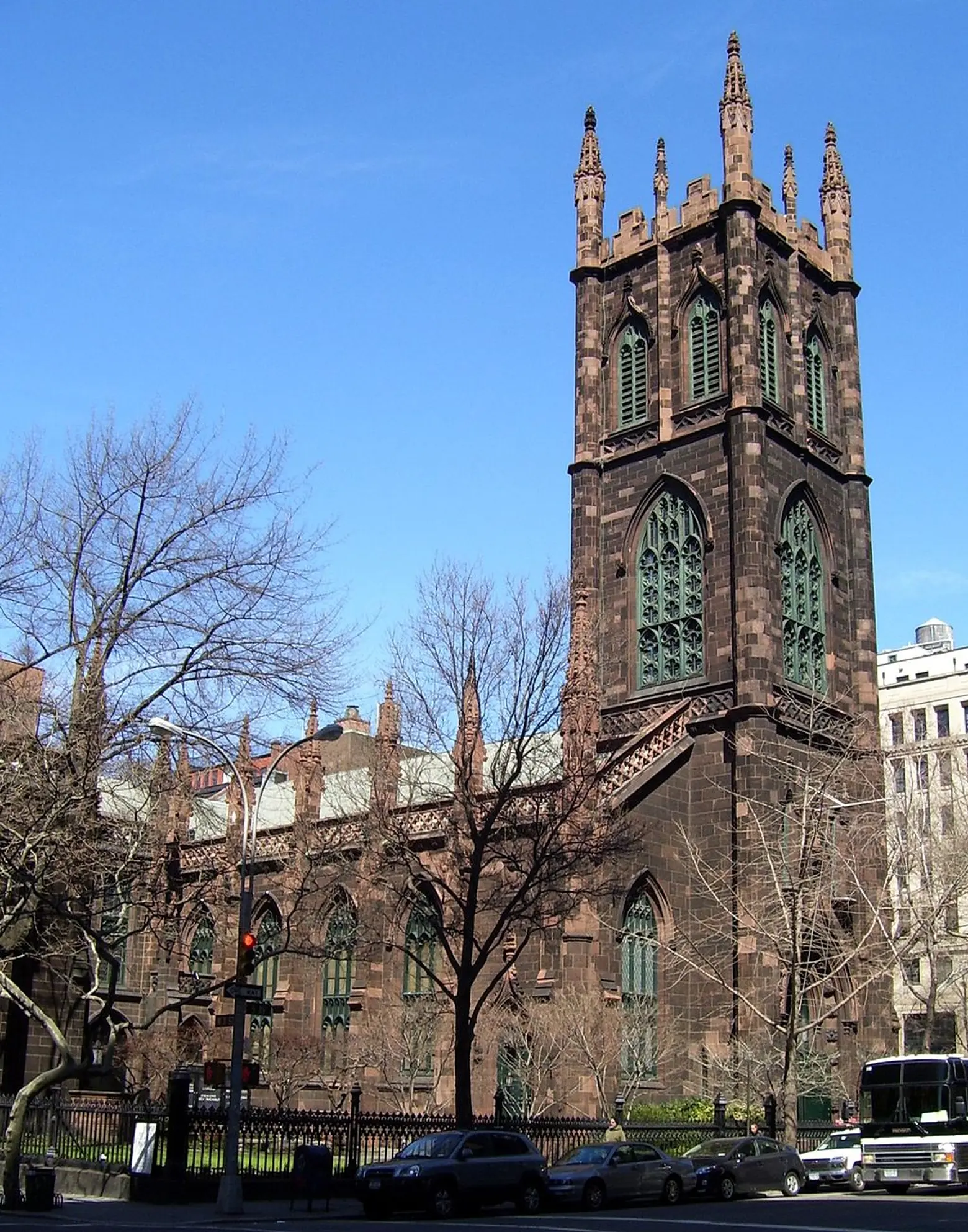 First Presbyterian Church via Wiki Commons
First Presbyterian Church via Wiki Commons
The brownstone First Presbyterian Church on Fifth Avenue between 11th and 12th Streets was constructed in 1844-46 in the Gothic Revival style. Though built more than two decades later than St. Luke’s, when the Village was significantly more developed, First Presbyterian nevertheless looks similarly plucked from a Village green. The structure was modeled on the Church of St. Saviour in Bath, England, while the tower is modeled on the Magdalen Tower in Oxford. The church’s ample grounds surrounded by its 19th-century iron fence maintain the illusion of bucolic relief, even as the church is footsteps from the hub-bub of 14th Street.
9. Renwick Row
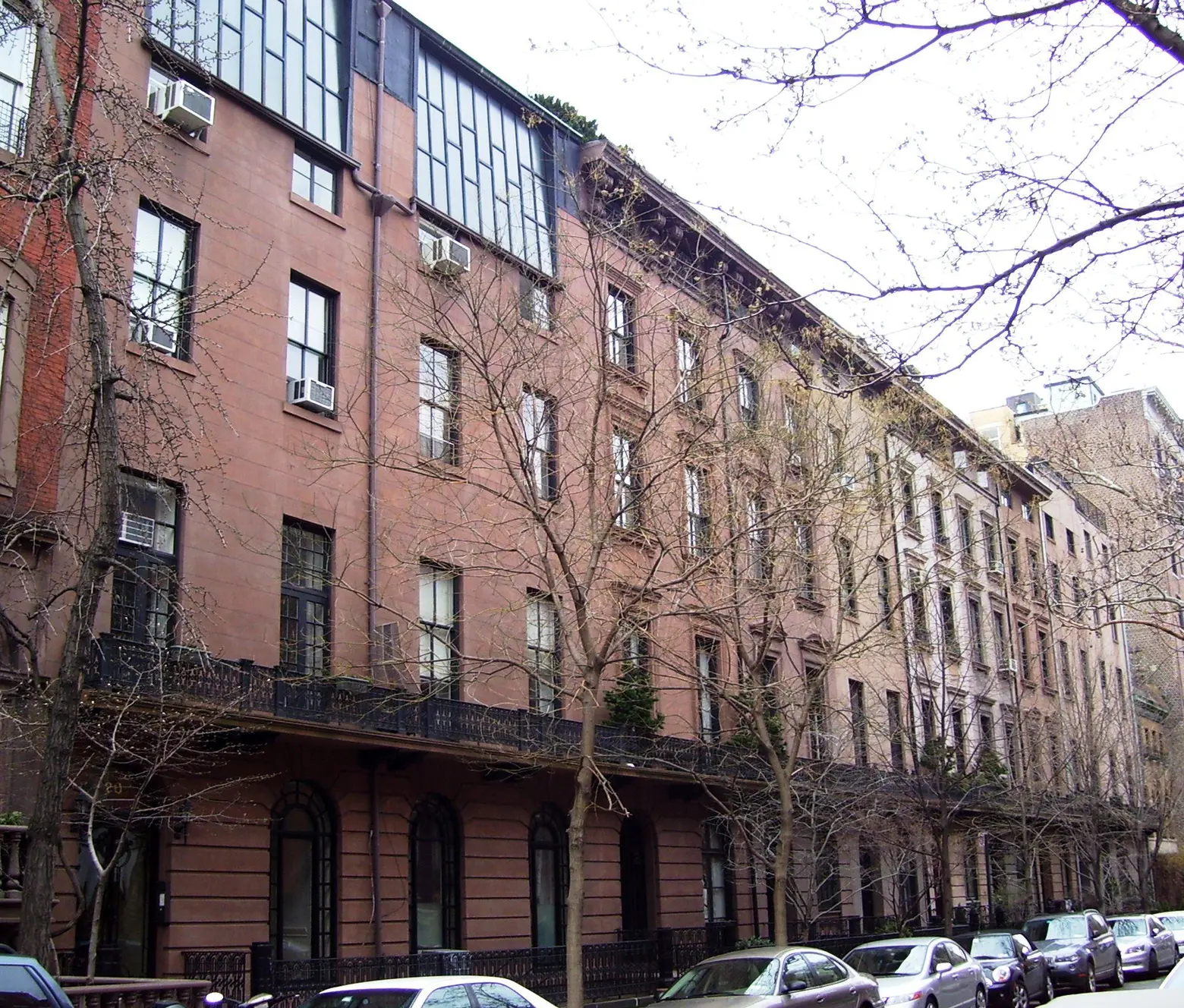 Via Wiki Commons
Via Wiki Commons
The Greenwich Village Historic District is blessed with the only row (as opposed to triangle) of houses in New York designed by famed 19th-century architect James Renwick (Grace Church, St. Patrick’s Cathedral). This stately collection of brownstone Italianate homes at 20-38 West 10th Street (1856-58) is also one of the very few rows of houses in New York built in the “English Terrace” style (in fact they were once known as “English Terrace Row”), with a balcony joining all the houses together and a low front stoop just two or three steps up from the street. This was the first row of houses in New York to do this, drawing upon mid-19th-century models in London, as opposed to the traditional Dutch-inspired high stoop which dominated New York rowhouse construction until this time.
The row remained a prestigious address for New Yorkers throughout the Gilded Age (as evidenced by these interior shots from 1901), though by the early 20th century, the row, like much of Greenwich Village, fell on harder times, and many of the houses were subdivided and altered. Today, most have been restored to their original condition on the exterior.
10. Butterfield House
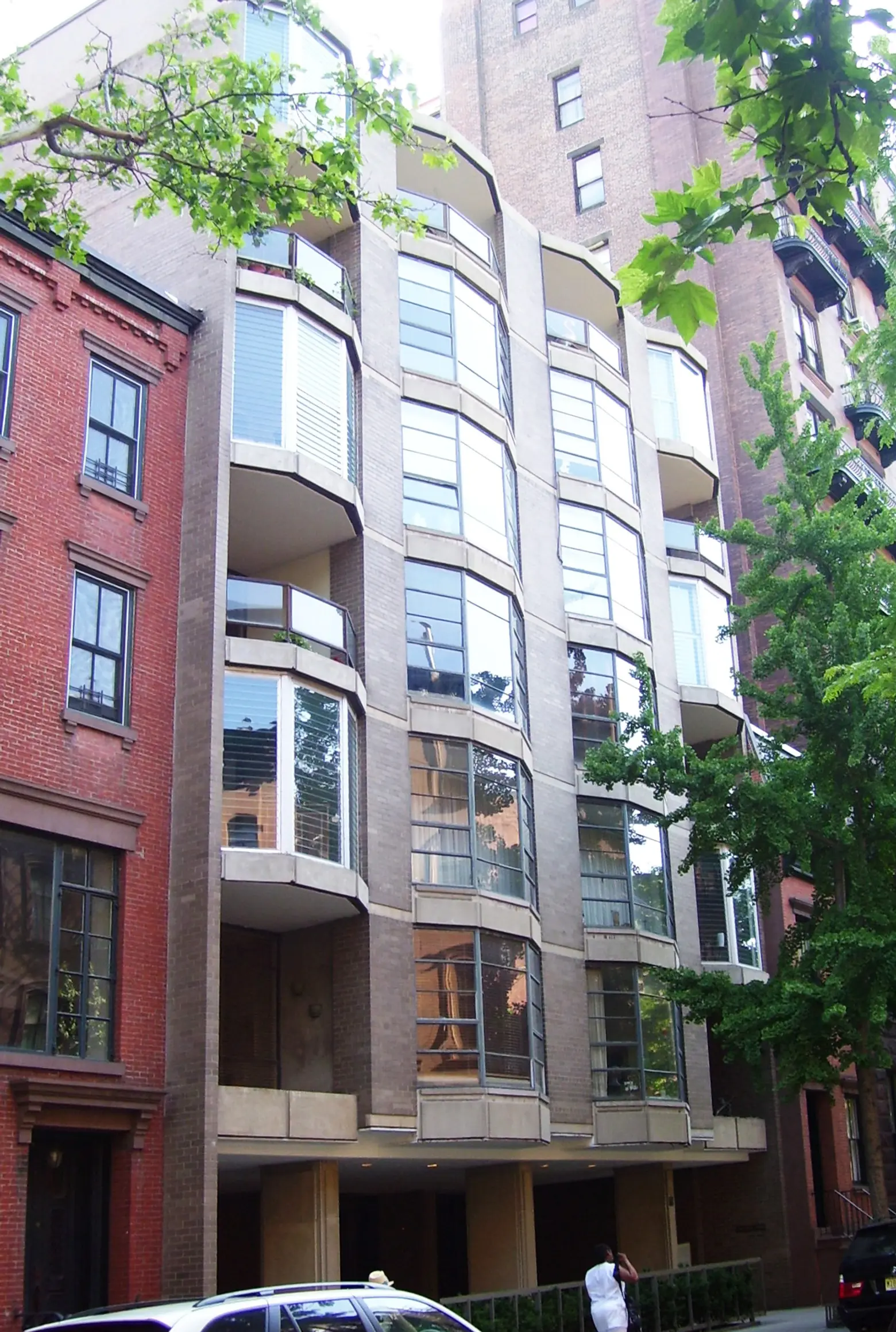 The 12th Street facade via Wiki Commons
The 12th Street facade via Wiki Commons
Few modernist buildings in New York from the decades after World War II ever get labeled “charming,” but the Butterfield House at 37 West 12th Street may be the exception. Designed in 1962 by William Conklin and James Rossant, it is unabashedly modern in its glass and concrete honeycomb design, yet blends harmoniously with its brick and stone 19th and early 20th century neighbors.
The building is actually two structures connected by a glass passageway through a courtyard punctuated by peaceful fountains, with the more intimately-scaled seven-story wing facing 12th Street, and a more industrial-scaled 12-story wing facing 13th Street, which has a more similar character. This makes Butterfield House the unusual example of contextual design in an era when such considerations were typically ignored. While the 12th Street structure is larger than the 19th-century houses on either side (although smaller than the many of the apartment buildings further along the block), its open ground floor and deeply-indented terraces give the illusion that space flows through the building. Thus Butterfield House never feels imposing, as it appears to float alongside its much more solid masonry neighbors.
RELATED:
- The 10 most charming spots in the Greenwich Village Historic District
- The oldest house in the Village? It’s not what you think
+++

For updates and more details about the Greenwich Village Historic District 50th anniversary and a full roster of events, click here >>
+++
This post comes from the Greenwich Village Society for Historic Preservation. Since 1980, GVSHP has been the community’s leading advocate for preserving the cultural and architectural heritage of Greenwich Village, the East Village, and Noho, working to prevent inappropriate development, expand landmark protection, and create programming for adults and children that promotes these neighborhoods’ unique historic features. Read more history pieces on their blog Off the Grid
Get Inspired by NYC.
Leave a reply
Your email address will not be published.
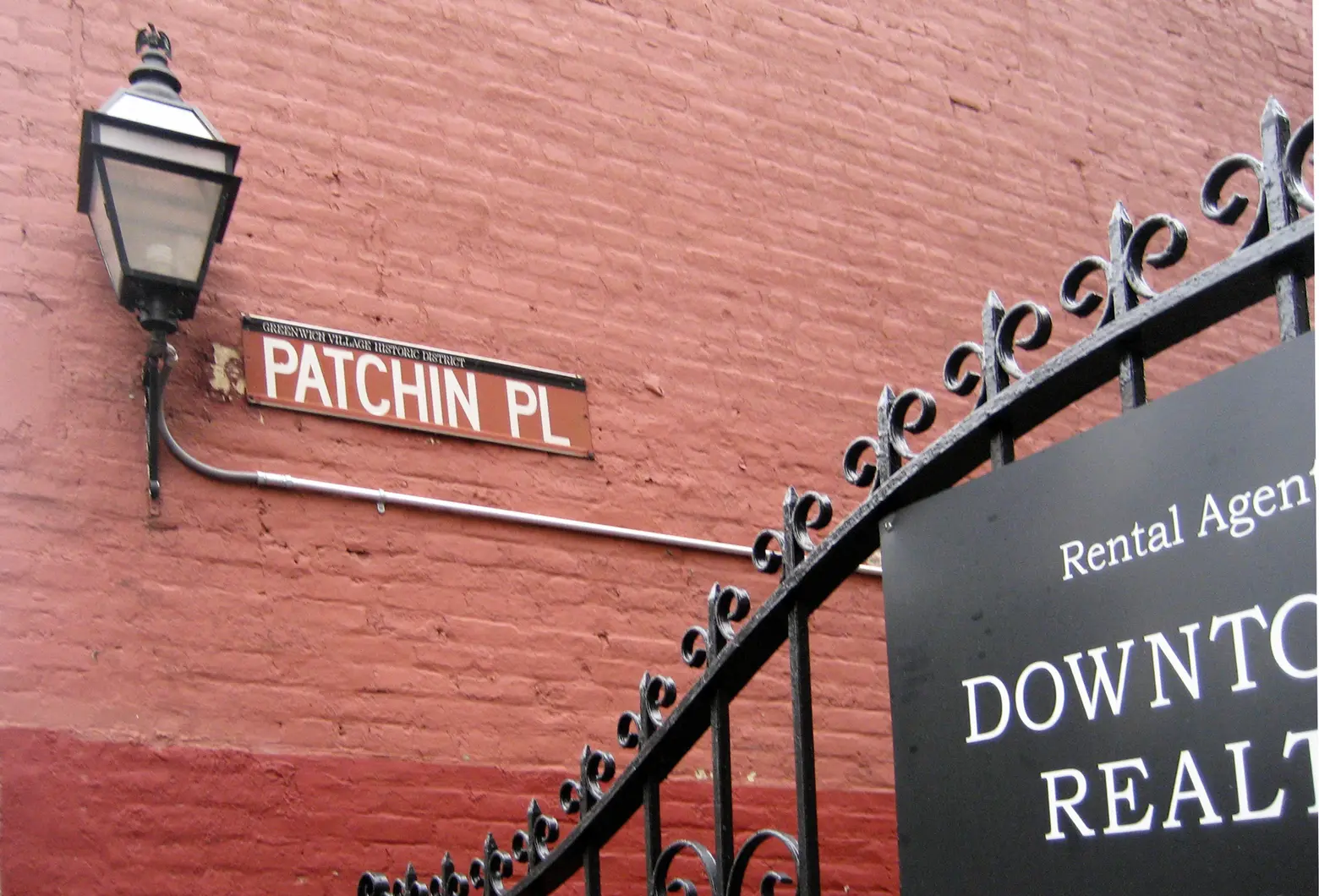 Via
Via 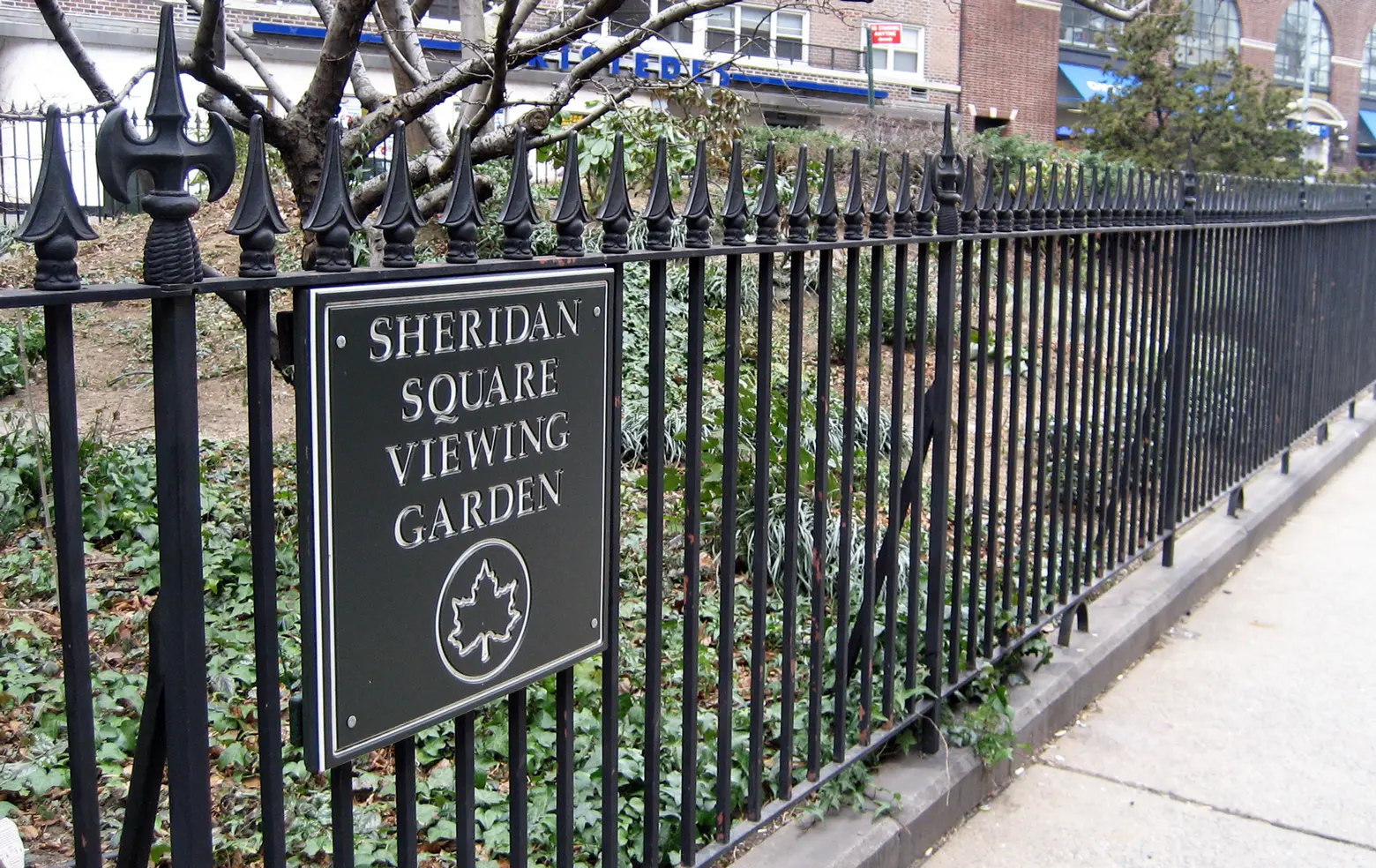 Via
Via 
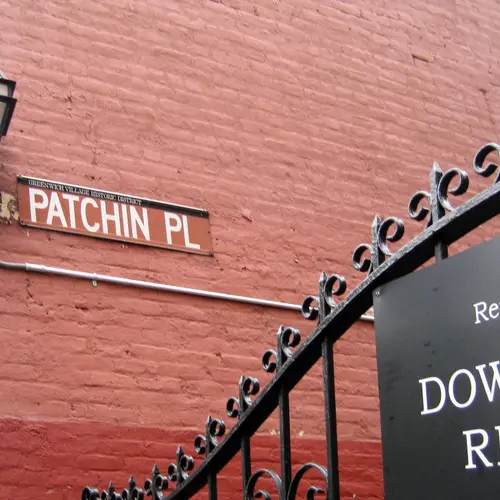
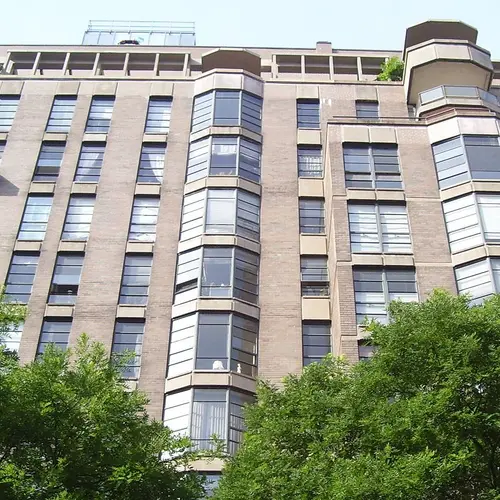
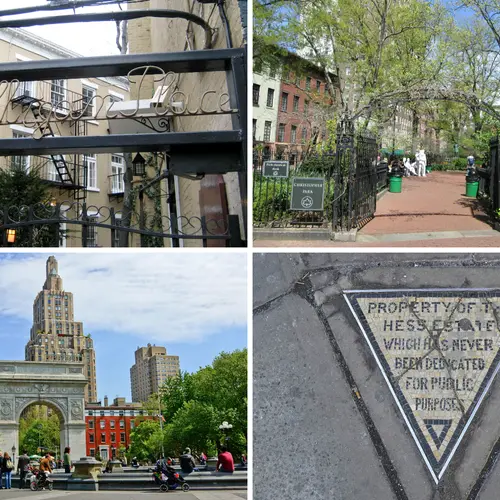
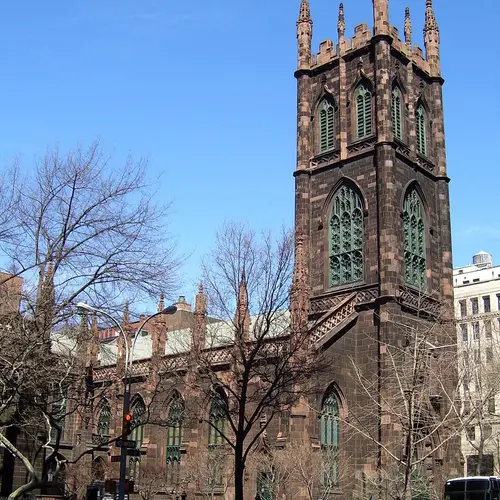
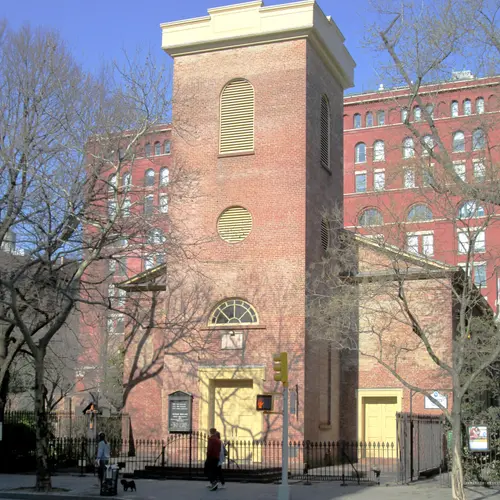
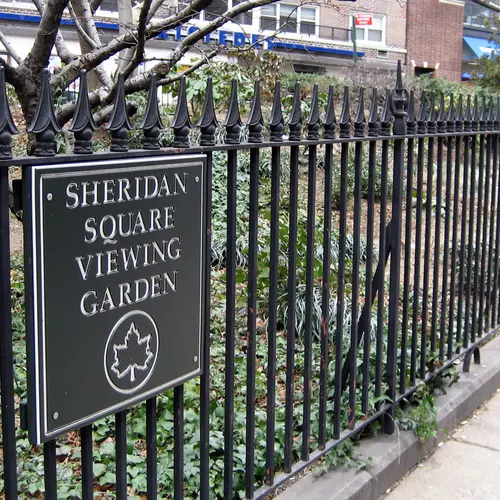
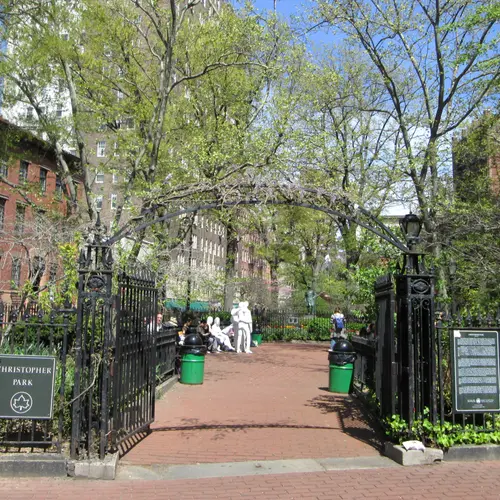
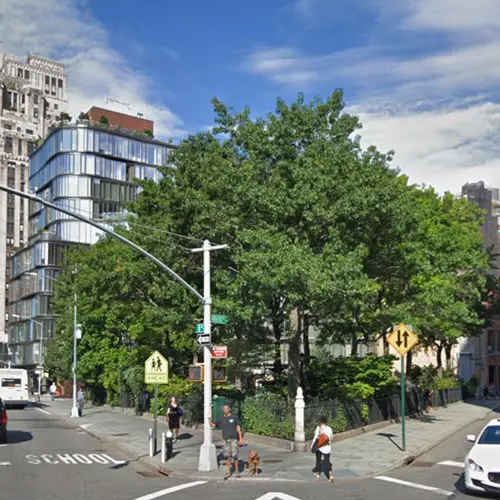
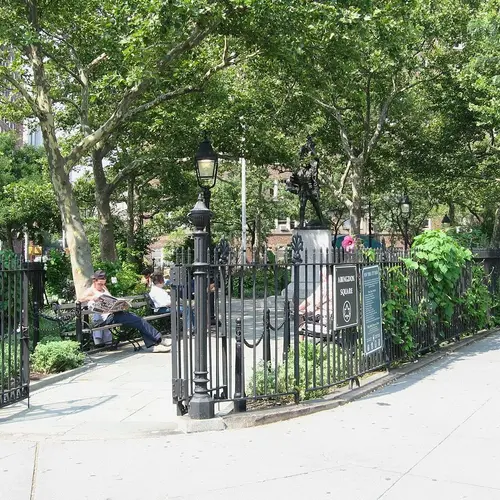
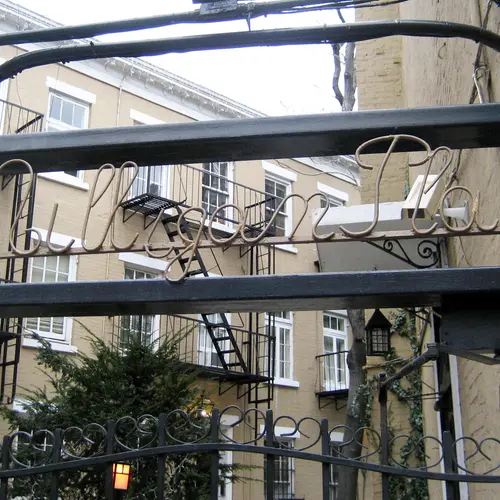
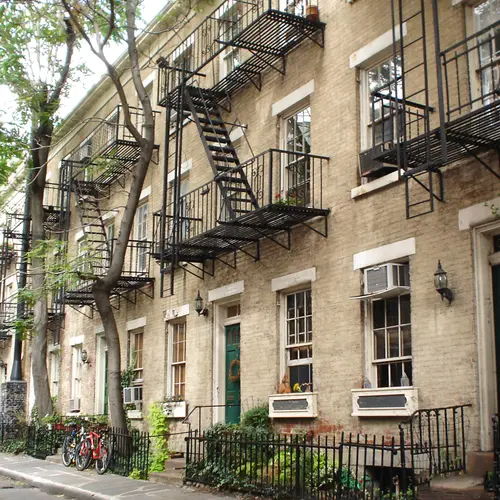
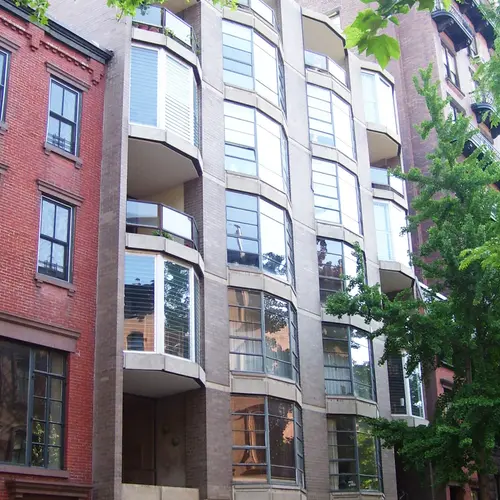
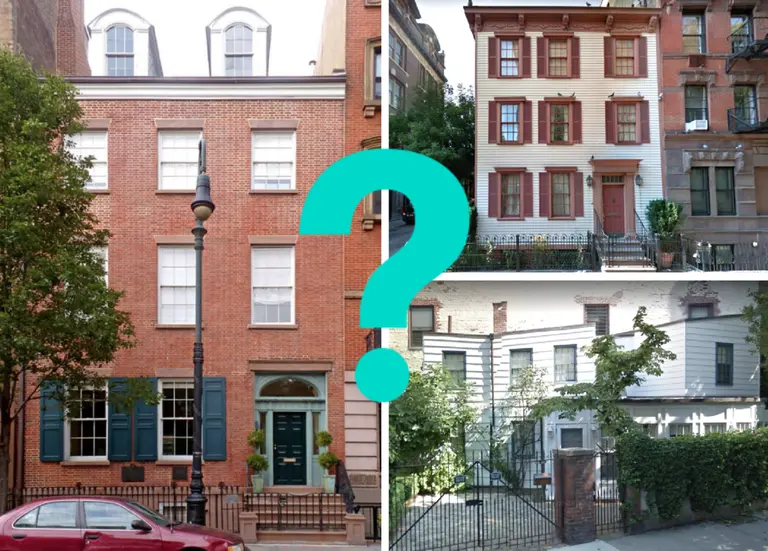
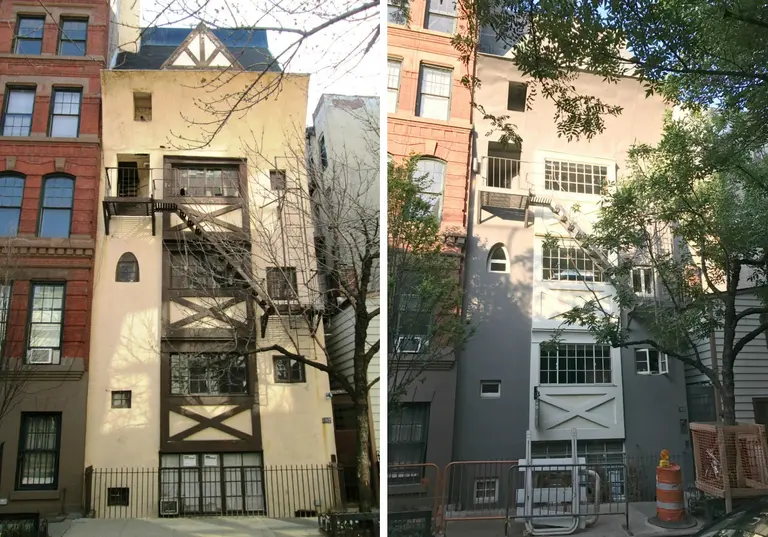


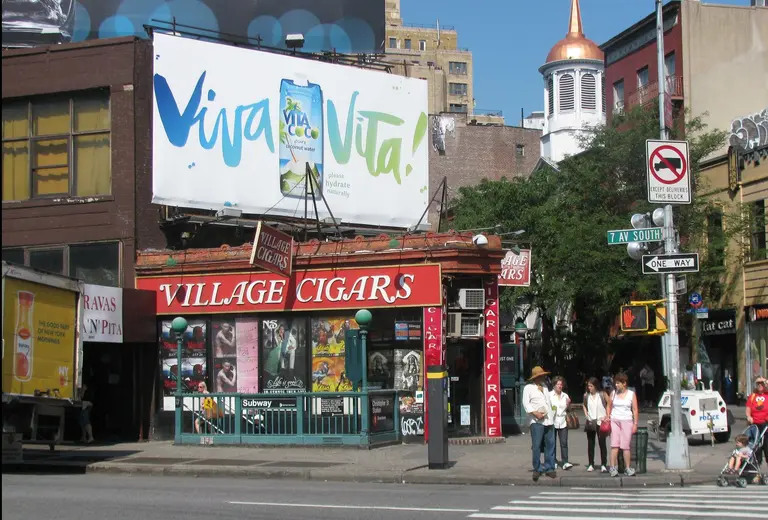
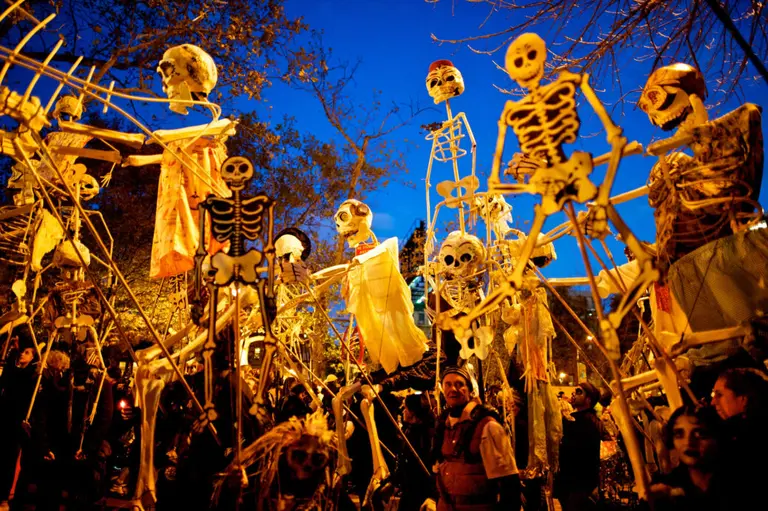





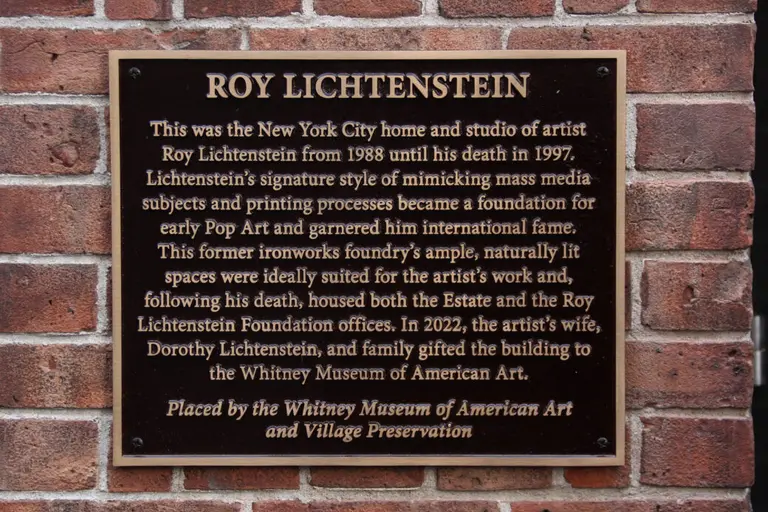
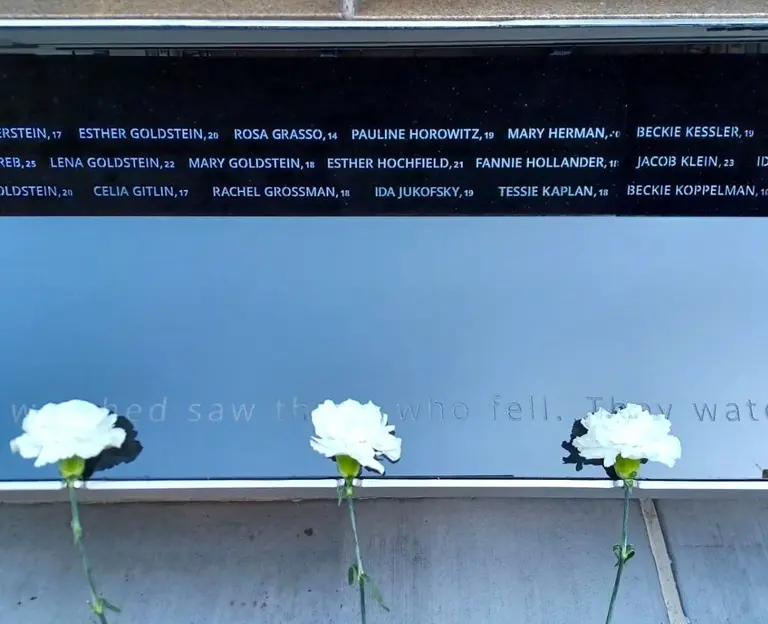
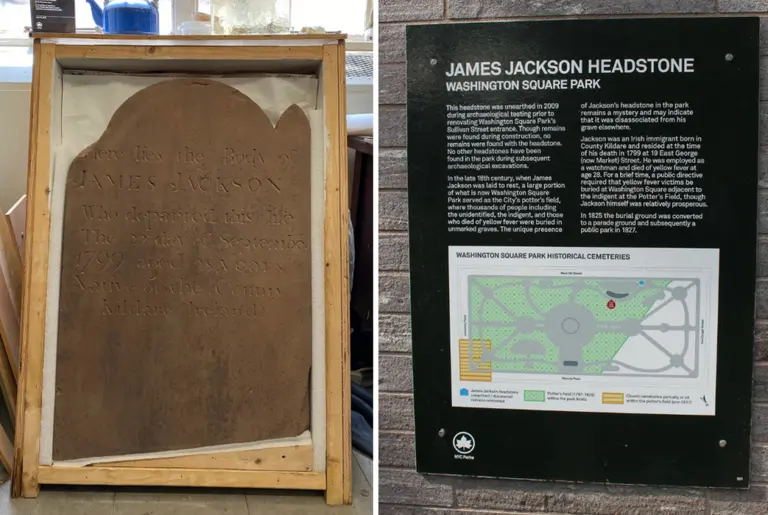
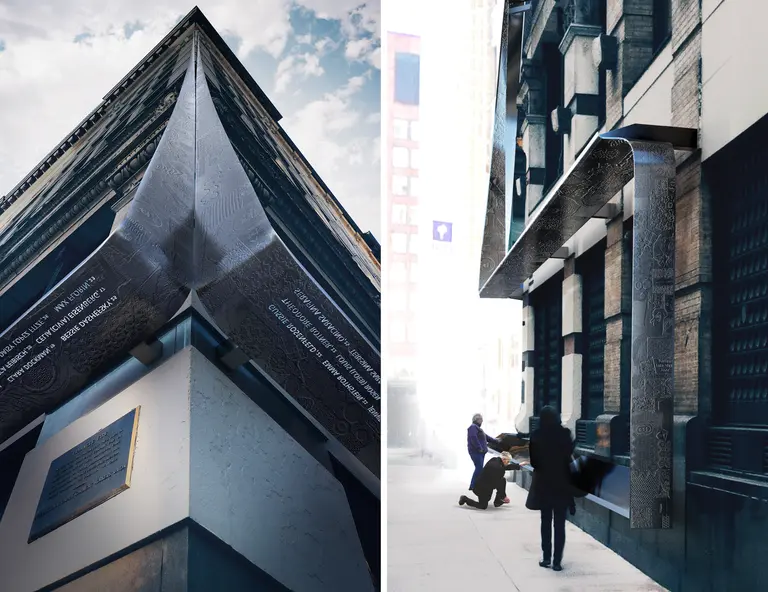
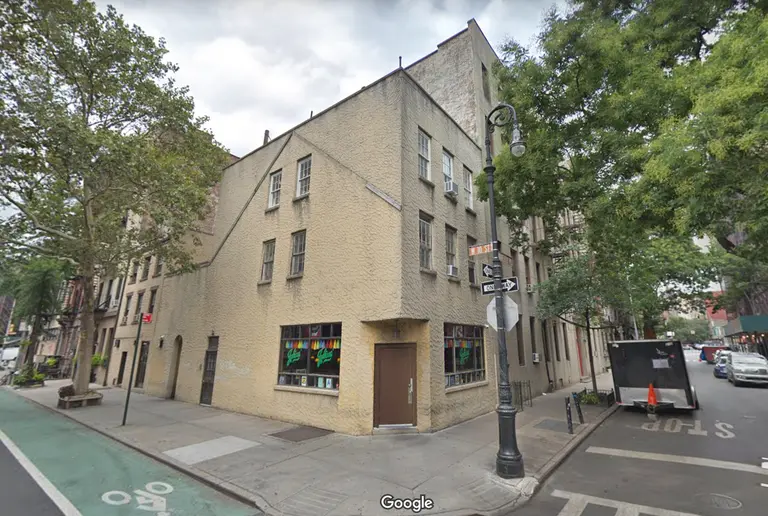
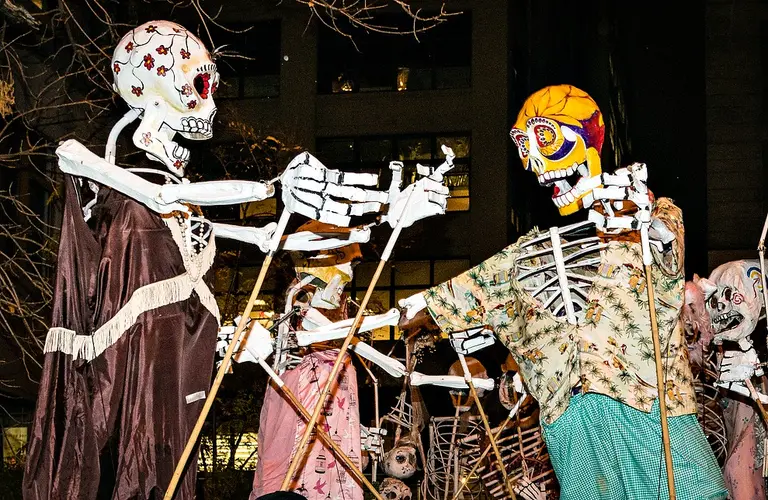













Love this